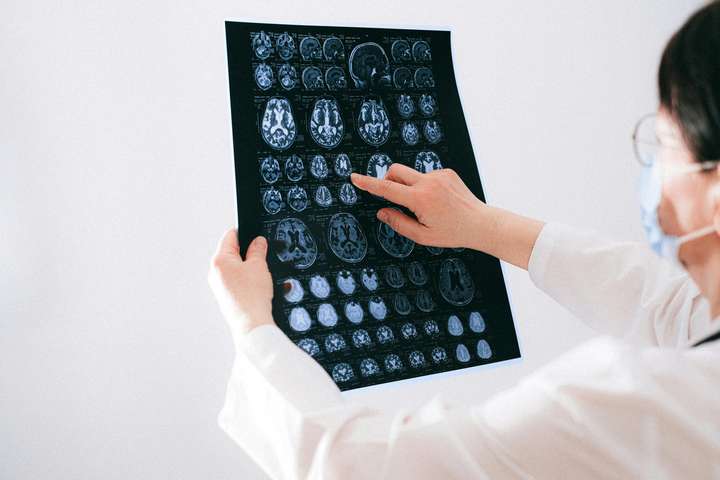Certain medical diseases are highly focused on because of their intricacy and effect on human existence. Glioblastomas are notable among them due to their aggressiveness and difficult prognosis. Due to its fast development and resistance to traditional therapies, this kind of brain tumor presents serious challenges for both patients and medical professionals.
The Aggressive Nature of Glioblastomas
Grade IV astrocytomas, often known as glioblastomas or glioblastoma multiforme (GBM), are the most aggressive and severe type of brain tumor. They come from the star-shaped glial cells called astrocytes, which support the brain’s nerve cells. Glioblastomas are known for their fast development, which frequently exceeds the body’s capacity for resistance. The fast rate of mitosis inside the tumor cells is the cause of this rapid growth, which expands the bulk and infiltrates the surrounding brain tissue. Because of the tumor’s aggressive growth nature and extensive penetration into healthy brain areas, surgical excision is almost impossible.

Glioblastomas are known for their aggressiveness, which is further shown by their heterogeneity—a tumor made up of diverse cell types with unique genetic alterations and features. Treatment is made more difficult by this heterogeneity since distinct tumor components may react differently to various treatments.
Current Treatment Modalities and Their Limitations
Usually, glioblastoma patients receive chemotherapy, radiation therapy, and surgery together for treatment. The main objective of surgery is to remove the tumor as much as possible while preserving vital brain functioning. However, total excision is rarely possible because of the tumor’s infiltrative nature. Radiation therapy is one form of post-surgical treatment that targets remaining tumor cells. However, the safe radiation dosage for this kind of treatment is generally restricted due to the tumor’s proximity to brain structures. The most important component of treating glioblastoma is chemotherapy, of which temozolomide is the most often prescribed medication. Organizations like the Glioblastoma Foundation play a crucial role in advancing research and support for patients grappling with this challenging condition.
Innovative Research and Emerging Therapies
Glioblastoma research is still ongoing and is opening up new therapy and understanding options. Using immunotherapy, which aims to activate the body’s immune system to combat cancer, is one promising field of study. The possibility of improving outcomes for glioblastoma patients is being investigated through techniques like checkpoint inhibitors, which work by taking away the immune cells’ “brakes,” and CAR-T cell therapy, which entails reprogramming a patient’s T cells to target cancer cells specifically. While these treatments are still in the experimental phases, early clinical trials have demonstrated some success. Utilizing targeted medicines, which concentrate on certain genetic alterations inside the tumor, is another cutting-edge strategy.
The Role of Genetic and Molecular Profiling
Developing successful therapies for glioblastomas requires an understanding of their genetic and molecular landscape. To find the mutations and changes that fuel the development of cancer, genetic profiling entails analyzing the DNA of tumor cells. This data can assist in forecasting the tumor’s response to various treatments and helps direct the selection of targeted therapy. Tumors may become more resistant to chemotherapy if there are mutations in the MGMT gene, for instance, which fixes damaged DNA. On the other hand, patients with a methylated MGMT promoter typically react more favorably to temozolomide. Examining the tumor’s protein and other molecule expression levels is another aspect of molecular profiling. Proteomics and RNA sequencing are two methods that offer a thorough understanding of the biological processes inside the tumor.
The Impact on Patients and Support Systems
A diagnosis of glioblastoma has a significant impact on the patient, their relatives, and networks of support. The severe symptoms, including headaches, seizures, and cognitive impairments, together with their fast advancement, can drastically reduce a patient’s quality of life. Patients and their loved ones must deal with the reality of a life-threatening illness and the frequently restricted treatment options, which places a tremendous emotional and psychological weight on them. To assist patients in overcoming these obstacles, healthcare practitioners must communicate effectively and offer assistance. Family, friends, and medical professionals are examples of support networks that are vital in helping to manage the short- and long-term effects of glioblastoma.
Conclusion
Because of their aggressive nature, restrictions about therapy, and significant impact on patients and families, glioblastomas pose significant hurdles. A more comprehensive approach can be attained by attending to patients’ emotional and medical requirements. There is promise for improved support networks and more potent medicines for individuals suffering from this terrible illness as research progresses.

